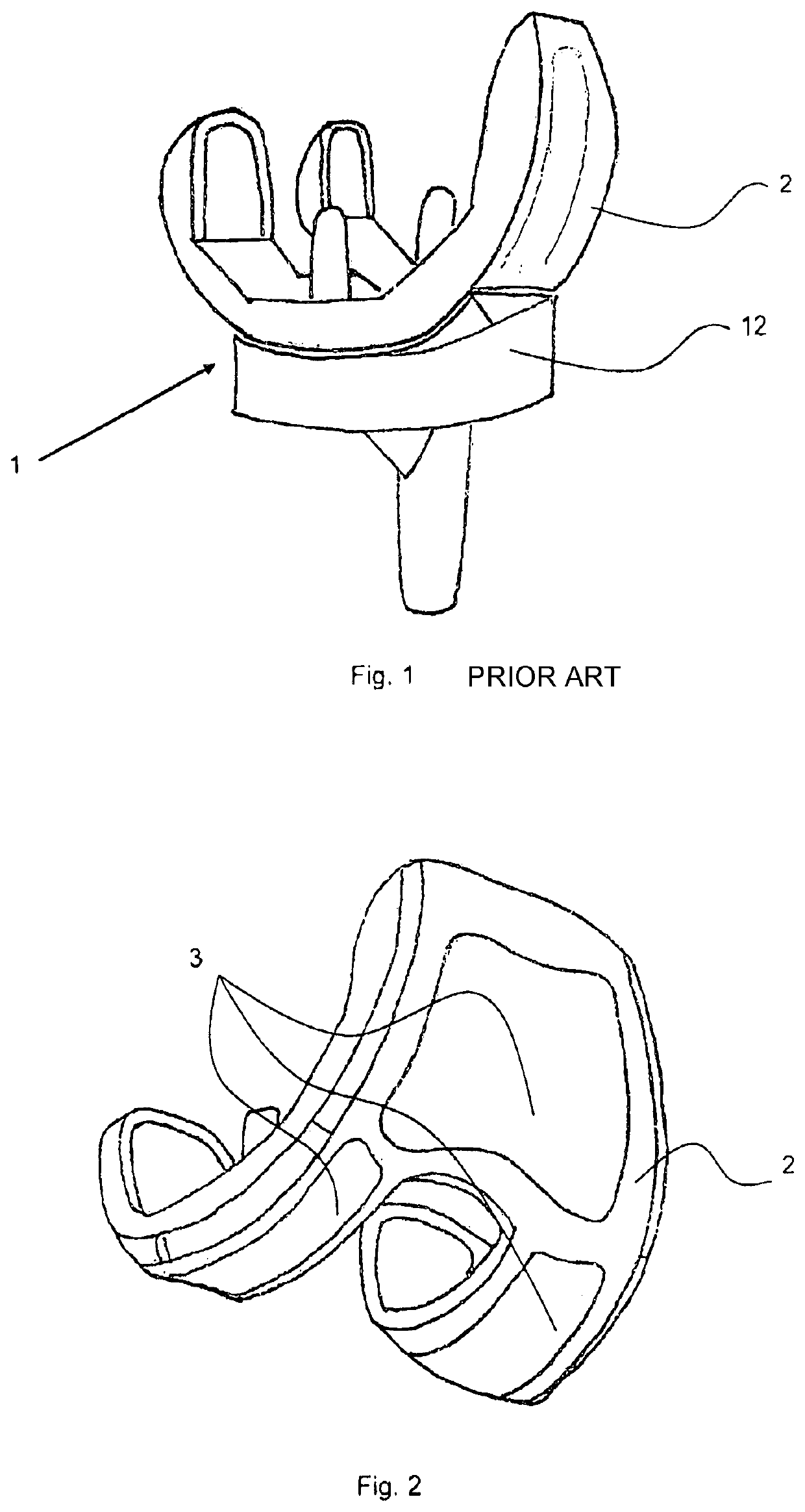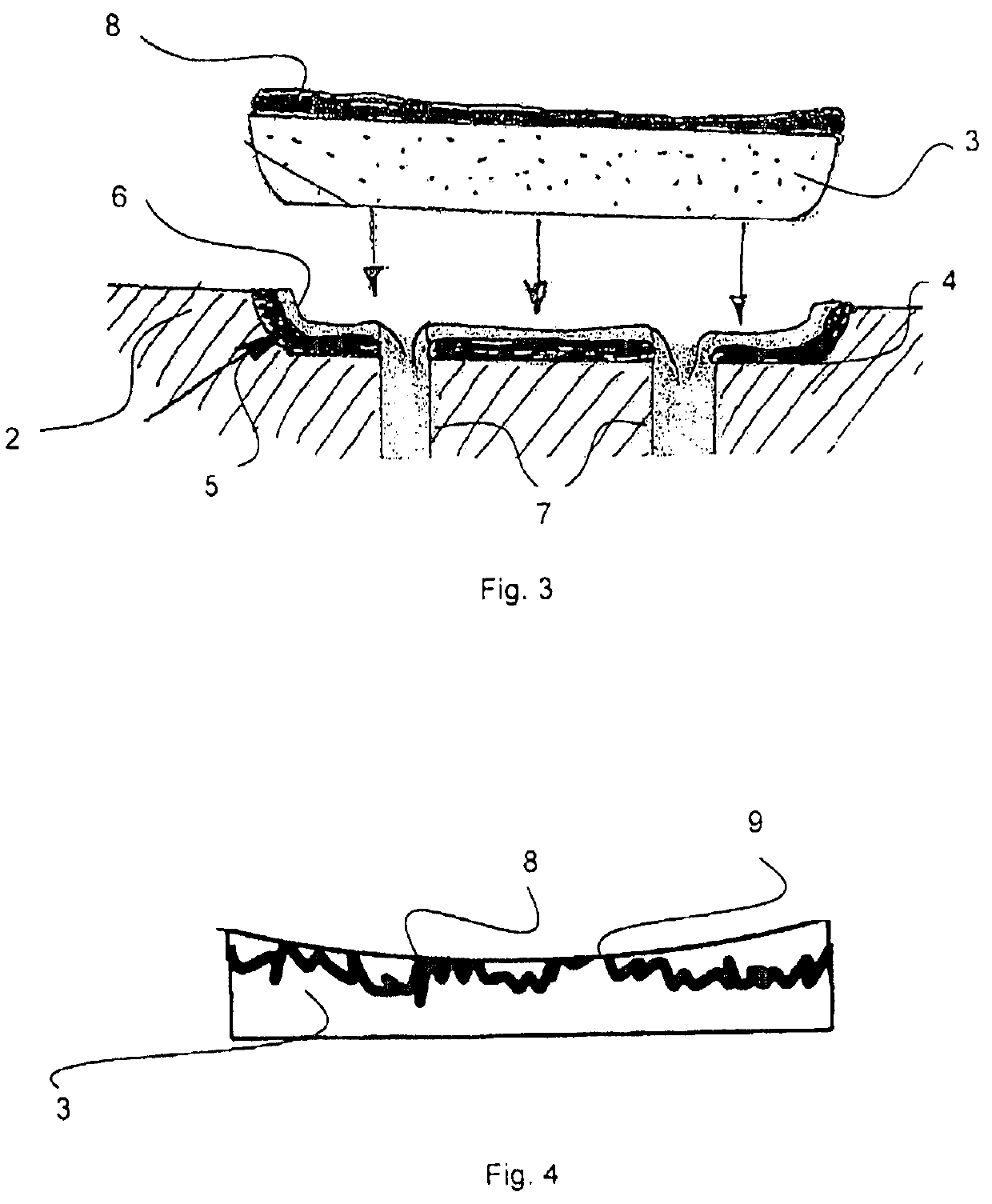Orthopedic implant
- Summary
- Abstract
- Description
- Claims
- Application Information
AI Technical Summary
Benefits of technology
Problems solved by technology
Method used
Image
Examples
Embodiment Construction
[0013]The drawing in FIG. 1 shows a knee endoprosthesis 1 according to the prior art in a perspective illustration. The implant is formed by a femur component with a base body 2 that consists of a ceramic material, as well as a tibia component 12 of which at least the area facing toward the femur component consists of polyethylene.
[0014]In comparison, FIG. 2 shows a femur component according to an embodiment of the present invention, with sliding tribological surfaces that are formed by inserts 3 of a ceramic material that are inserted in a base body 2. In the case of the example embodiment described here, zirconium dioxide was used for producing these inserts 3, but in the same manner the inserts 3 can however alternatively consist of an aluminum oxide ceramic or of a mixture of these two ceramics.
[0015]The ceramic inserts 3 are integrated in the manner of inlays in allocated “tub or trough shaped” receiver recesses 4 of a metallic base body 2 of the femoral component, wherein the ...
PUM
| Property | Measurement | Unit |
|---|---|---|
| Melting point | aaaaa | aaaaa |
| Tribological properties | aaaaa | aaaaa |
| Surface roughness | aaaaa | aaaaa |
Abstract
Description
Claims
Application Information
 Login to View More
Login to View More - R&D
- Intellectual Property
- Life Sciences
- Materials
- Tech Scout
- Unparalleled Data Quality
- Higher Quality Content
- 60% Fewer Hallucinations
Browse by: Latest US Patents, China's latest patents, Technical Efficacy Thesaurus, Application Domain, Technology Topic, Popular Technical Reports.
© 2025 PatSnap. All rights reserved.Legal|Privacy policy|Modern Slavery Act Transparency Statement|Sitemap|About US| Contact US: help@patsnap.com


